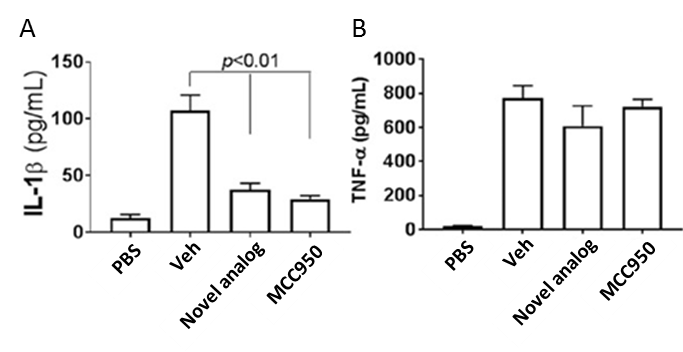Alzheimer’s Disease Therapeutics
NLRP3 Pathway Inhibitors
Reducing neuro-inflammation in Alzheimer’s Disease
It is estimated that more than 5 million Americans, and up to 36 million individuals worldwide, are affected by Alzheimer’s disease. Despite ongoing research to find an effective treatment, current treatments only provide symptomatic relief and there are no therapeutic agents available that can delay or cure the disease. However, it has been found that neuro-inflammation is a key player in this disease and that it can be caused by activation of the NOD-like receptor family pyrin domain containing 3 (NLRP3) inflammasome. A VCU researcher has developed compounds that can inhibit the NLRP3 pathway to prevent inflammatory responses. These novel compounds have the potential to regulate one of the most notable risk factors associated with Alzheimer’s.
The technology
Novel analogs derived from HL16 that have been identified as NLRP3 inflammasome inhibitors. In vitro studies, on the most potent analog, have shown that the analog dose dependently suppresses the release of IL-1β, selectively inhibits the NLRP3 inflammasome (Figure 1), and is able to penetrate the blood-brain barrier (BBB). The novel analogs developed could be potential therapeutics for neurodegenerative disorders, especially for Alzheimer’s disease. These novel compounds could prevent a “second wave” of inflammation from occurring; they could also lessen and even halt further progression of their existing symptoms.

Figure 1: Serum levels of IL-1β (A) was significantly reduced while no significant inhibition on the TNF-α (B) level was observed by the treatment of both compounds at the tested dose, thus strongly suggesting the selective in vivo engagement of NLRP3 inflammasome in the observed effects by the novel analog and MCC950.
